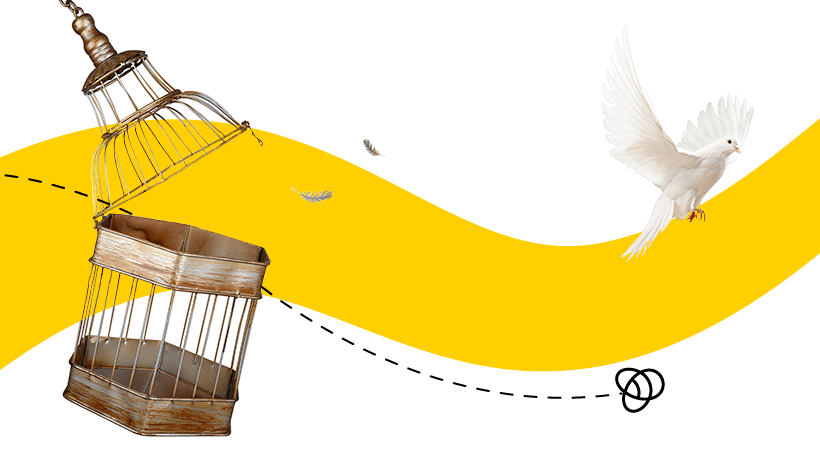How To Create A Culture Of Innovation
I thought Jeff Bezos was crazy. He had no niche. In 1997, I attended a small meeting with him, and 20 or so people, in Boston. He talked about moving from book sales to selling, well, everything—from soup cans to vacuum cleaners. The sheer scope went against everything I’d learned about marketing. I laughed at his ideas after the meeting.
I, on the other hand, was burning the midnight oil with a dot-com on the way to IPO, which merged with Agency.com. We had weekly massage chair appointments, endless takeout, and mahogany-lined cubicles. Honest to God. I mean, what makes a cubicle more enjoyable than mahogany?
Clearly, I had a thing or two to learn about innovation. Most of us did. It’s not about the massages or food, though those are nice. It’s about leading your culture and creating a culture of innovation.
1. Focus On Diversity And Inclusion
Ever been on a marshy dock at sunset? It’s teeming with life. There’s an ecological concept, called “the edge effect,” that relates to people too. When two ecosystems come together, new species are created. Think of land and sea. Forest and field. You hear more birds at the edge of the forest. The flora and fauna converge and new life emerges.
Diversity breeds new life. Similarly, when a diverse group of people and perspectives come together, there’s opportunity for new ideas. This could include various roles, ethnicities, MBTI profiles, and expertise. And in order for their conversations to be productive, teams need to learn how to be inclusive and generative together. A study by Google [1] found that psychological safety is the number one factor in team success.
2. Determine How To Respond To Failure
"Dearly beloved, we are gathered here today to confess and celebrate the failures of ourselves and our colleagues.” This is how the monthly Church of Fail meeting at NixonMcInnes jokingly begins. During this time, colleagues confess their failures, laugh, and learn together.
Remember when you learned to ride a bike or do gymnastics or yoga? It usually doesn’t start very pretty. Most of us need to learn how to fall. Similarly, in order to truly innovate, businesses need to learn how to fail—or at least how to respond to failure, learn from it, and manage risk.
3. Measure And Manage Your Culture
The old Drucker adage—“If you can’t measure it, you can’t manage it”—is often overlooked with culture. There are a number of cultural assessments which will enable you to see where you are, where you want to go, and the obstacles and strengths among your team. Create dialogue around the findings. Knowing is half the battle. Pick three to five measurable goals, and create a timeline for managing them.
4. Manage Bureaucracy
In August 2016, the National Parks Service celebrated its 100th anniversary. One of the leading parks gathered its top 50 leaders together to ask, “Who do we want to be in the next 100 years?” The previous 100 years were focused on “protect, serve, and enjoy,” an honorable motto driven by ranger culture. Now, many of the employees yearned for more. They saw the national park as cathedrals to the natural world, with the power to inspire a connection to life on our planet during this critical time.
During the meeting, one team member espoused the virtues of bureaucracy. He believed that it kept the teams in the large organization working in concert, and created accountability. Other team members sat back, crossed their arms, and rolled their eyes. It was exactly the mindset that kept them thinking small.
I asked the participants to break into groups of four to list specific examples of policies, procedures, or behaviors related to bureaucracy that enabled them to work effectively together. Then I asked them to list up to five specific examples of how it inhibited them from moving forward. The groups merged into larger groups to share their findings, and then back into one large group. By the end of the exercise the groups had identified procedures to slash and some to keep. At the end of the day, it was about identifying the hard conversations and getting clear together.
5. Create And Iterate
Perfect is the enemy of good. In today’s complex times, more than ever before, it’s clear that there is no perfect. Establish a vision, go through a solid design process, and then create and iterate. Whatever you create will be refined and made more relevant in the process.
The novelist Elizabeth Gilbert talks about the 'elusive genius', that it comes and disappears of its own accord, but that we need to make time to listen. In the book Little Bets, author Peter Sims asserts that most innovation occurs through a methodical series of little bets and iterations.
We may not be able to will a brilliant new idea into existence, but we can create the conditions in which innovation is more likely to occur—by focusing on diversity and inclusion, responses to failure, measuring culture, slashing bureaucracy, and iteration.
References:
[1] https://hbr.org/2017/08/high-performing-teams-need-psychological-safety-heres-how-to-create-it
Practices and methodologies:
- https://en.wikipedia.org/wiki/Theory_U
- https://www.johnkinyon.com/
- http://www.blueprintofwe.com/
Resources:
- https://www.amazon. com/Fifth-Discipline-Practice- Learning-Organization/dp/ 0385517254
- https://dschool.stanford.edu/resources-collections/a-virtual-crash-course-in-design-thinking
- https://www.ideo.com/eu
- https://www.triplepundit.com/2016/12/polarity-management-101-solution-unsolvable-problems/
- https://www.valuescentre.com/our-products/products-organisations/cultural-values-assessment-cva
- https://www.scrumalliance.org/learn-about-scrum
- https://www.valuescentre.com/
- https://www.denisonconsulting.com/
- https://www.humansynergistics.com/










